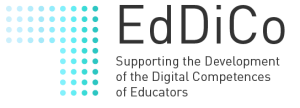Micro and Alternative Credentials – Webinar 2
Webinar on Micro and Alternative Credentials – this session provides an overview of HolonIQ’s comprehensive analysis of the micro-credentials market globally, including definition and segmentation of the micro-credentials market, the emerging infrastructure to support micro-credential ecosystems, and analysis of the likely future role of micro-credentials in the post-secondary landscape.
Micro-credentials have emerged over the past five years in response to the increasing need for smaller, more frequent and more focused learning opportunities that attract academic or industry recognition. However, the micro-credential space is still in a formative state with no universally agreed format or definition, and with many participating actors and emerging models.
This session provides an overview of HolonIQ’s comprehensive analysis of the micro-credentials market globally, including definition and segmentation of the micro-credentials market, the emerging infrastructure to support micro-credential ecosystems, and analysis of the likely future role of micro-credentials in the post-secondary landscape.
The webinar dives into micro-credentials trends.

